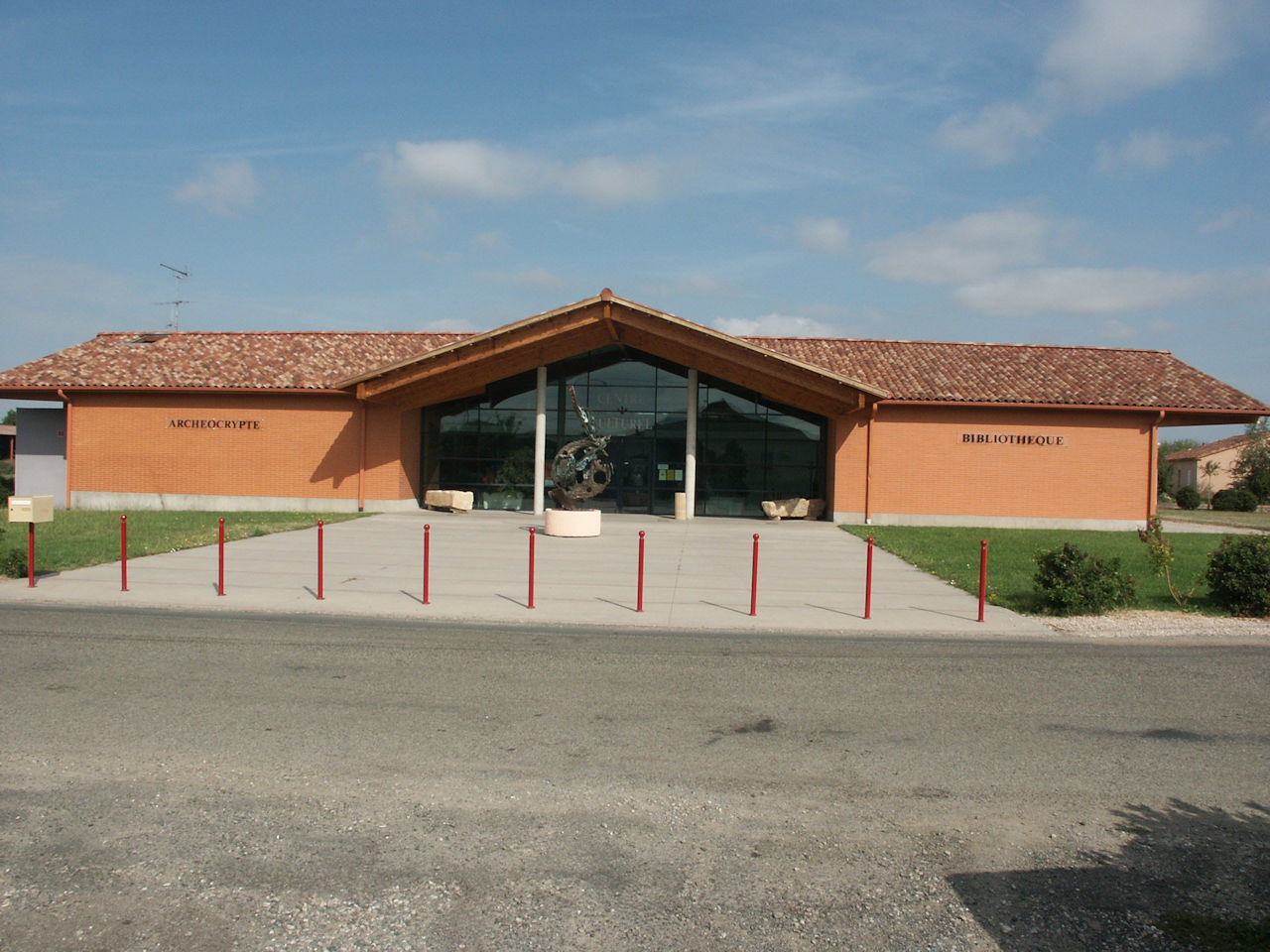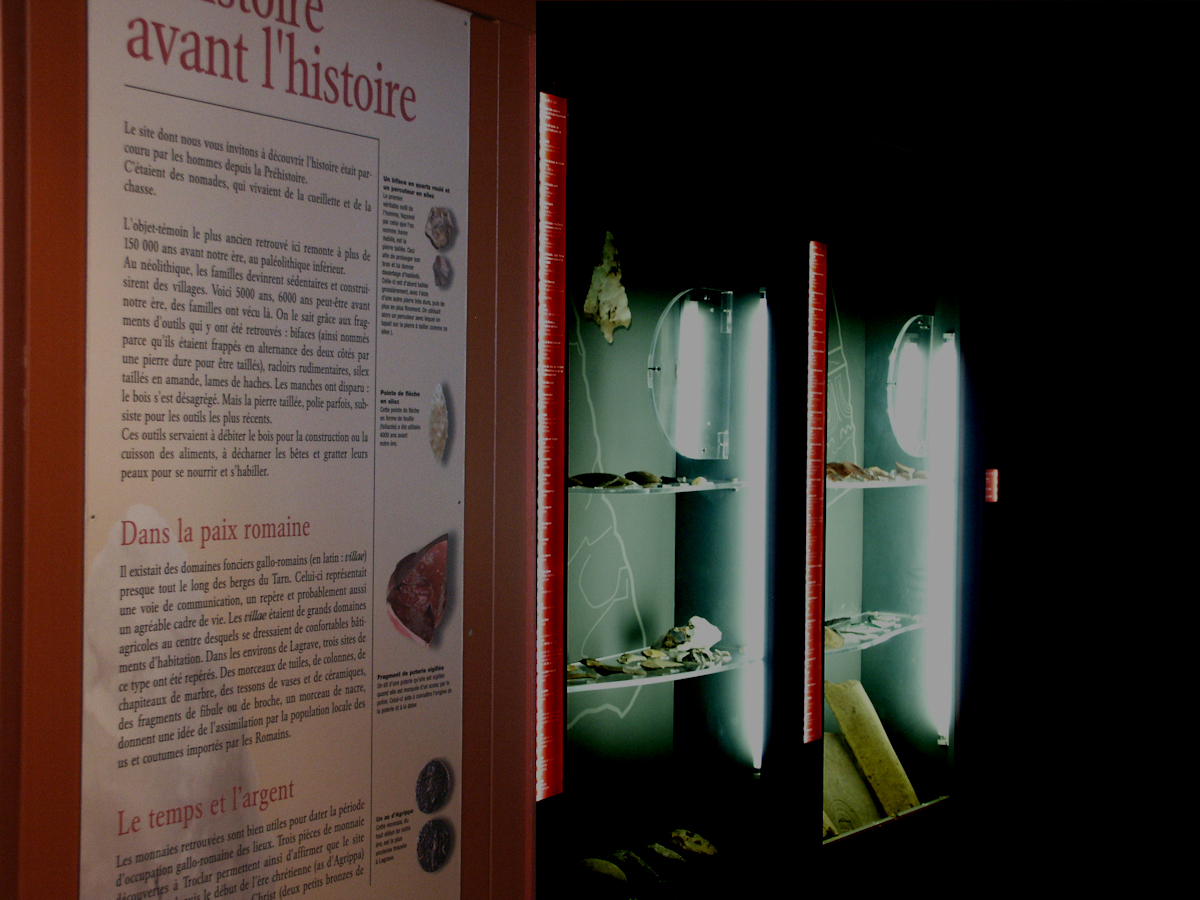The hectic and committed life of Sigolène, daughter of a Frankish military aristocrat, who commanded the Albi oppidum under the regal domination of the regent Brunehaut and King Dagobert.
From her happy childhood in the Garden of Eden at Troclar (Lagrave), to her commitment to the women victims of their century, who attended her monastery, Sigolène is an example of altruism in a century dominated by religion, but also by the violence and poverty of the people...
Archaeological research by Jean Lautier, Marie-Claude and Pierre Cabot has confirmed the presence of a monastery, a necropolis and a church containing the crypt of Saint Sigolène, at Troclar (located on the banks of the Tarn, now part of Lagrave). Carbon-14 dating enabled us to pinpoint the early Middle Ages period involved: 600-650 for the Sigolène activity. These excavations, completed in 2003, have given rise to a museum and the crypt of the Saint, which can be visited.
What we have here is evidence of an era that has unfortunately been badly neglected by historians. Merovingian Frankish society was at its height under Dagobert. Heir to the Roman civilisation, which it ensured survived, it replaced the Gallo-Roman culture in full decline. Bodily hygiene, the survival of Latin, the study of law and the humanities, and the re-establishment of the land register were just some of the strengths of this regime, which is too often disparaged.
The museum exhibits a wide range of objects from everyday life in the early Middle Ages: fibulae, cryptic objects, furgeories, pottery, games, jewellery, gardening equipment, sewing equipment, locksmiths' tools, cutlery, horse-riding equipment and more. The crypt, imbued with a certain mystery, seems to have preserved Sigolène's soul.
Sigolène's family, although of Nordic origin, was well known in Albi for its faith, authority and benevolence, with a father who was a military leader, Chramsicus, a brother who was a bishop, Sigibald, a second brother who was Duke of Albi, Babo, and her husband from a good family, Gislulfus.
Visitors will find information on funeral, farming and eating habits.
The period spans the regal authority of the regent Brunehaut, Clotaire II and then Dagobert, in other words the height of the Merovingian dynasty.
Classement & labels
- Bad weather alternative
Informations supplémentaires
Animaux acceptés : Non
Langues parlées
- French
- Occitan
Tarifs
| Rate | Min. | Max. |
|---|---|---|
| Adult (du 01/07/2024 au 30/06/2025) | Min: 2€ | |
| Child (du 01/07/2024 au 30/06/2025) | Min: 1,50€ | |
| Group adults (du 01/07/2024 au 30/06/2025) | Min: 2€ | |
| Group children (du 01/07/2024 au 30/06/2025) | Min: 1,50€ |
Moyens de paiement
- Check
- Cash
Prestations
Equipments
- Play area
- Picnic area
- Public WC
- Car park
- Coach parking
Services
- Educational visits
- Shop
- Permanent entertainments organiser
- Tourist brochures
- Tourist information
- Guided tours
Prestations
- Accueil groupe jusqu'à 45 personnes




